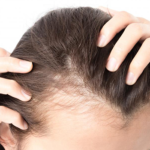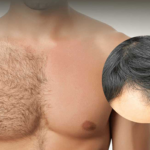The Anatomy of Male Hair Loss
Male hair loss, scientifically termed androgenetic alopecia, is a common condition affecting millions of men worldwide. It’s characterized by the gradual thinning of hair, typically starting at the temples or crown and progressing over time. While it’s often considered a natural part of aging, several factors contribute to its development, including genetics, hormonal changes, and environmental influences.
Causes of Male Hair Loss
- Genetics: Family history plays a significant role in male pattern baldness. If your relatives, especially on your maternal or paternal side, have experienced hair loss, you’re more likely to inherit the trait.
- Hormonal Changes: Hormones, particularly dihydrotestosterone (DHT), have a profound impact on hair follicles. DHT can shrink hair follicles, leading to shorter and finer hair growth cycles. This hormonal imbalance is a primary cause of hair loss in men.
- Age: As men age, the rate of hair growth slows down, and hair follicles become less active. This natural aging process contributes to the thinning of hair and eventual balding.
- Stress and Lifestyle Factors: High levels of stress, poor dietary habits, and certain lifestyle choices can exacerbate hair loss. Smoking, excessive alcohol consumption, and a lack of essential nutrients can all negatively affect hair health.
Treatment Options for Male Hair Loss
- Medications: FDA-approved medications such as minoxidil and finasteride can effectively slow down hair loss and promote hair regrowth in some men. These medications work by either stimulating hair follicles or blocking the production of DHT.
- Hair Transplant Surgery: For more advanced cases of male pattern baldness, hair transplant surgery offers a permanent solution. During the procedure, hair follicles are harvested from donor areas (typically the back or sides of the scalp) and transplanted into thinning or balding areas.
- Platelet-Rich Plasma (PRP) Therapy: PRP therapy involves injecting concentrated platelets from the patient’s blood into the scalp. These platelets contain growth factors that stimulate hair follicles, promoting hair regrowth and thickness.
- Low-Level Laser Therapy (LLLT): LLLT is a non-invasive treatment option that utilizes low-level laser light to stimulate hair follicles, improve blood circulation, and promote hair growth.
Why Choose Sona Health Istanbul for Hair Transplant Surgery
Istanbul has emerged as a leading destination for hair transplant surgery, attracting patients from around the globe. With state-of-the-art medical facilities, highly skilled surgeons, and competitive pricing, Istanbul offers unparalleled quality and value for individuals seeking hair restoration treatments. Additionally, the city’s rich cultural heritage and vibrant atmosphere provide a unique and memorable experience for patients traveling from abroad.
In conclusion, male hair loss is a common concern with various underlying causes and treatment options. Whether opting for medications, surgical interventions, or alternative therapies, consulting with a qualified healthcare professional is essential to determine the most suitable approach for addressing individual needs and achieving desired results.




